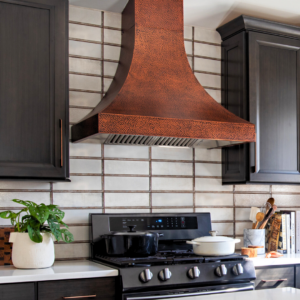Design Lessons from Japan: Exploring Mindful Design in an Ancient World
October 20, 2023
My family and I recently embarked on a transformative summer trip to Japan. This trip wasn’t just a vacation; it was my chance to explore Japan’s culture and design philosophy, which left me profoundly inspired.
Japan, an island country known for its rich history, stunning landscapes, and meticulous attention to detail, offered us a glimpse into a world where design and mindfulness are synonymous. From the sleek modernity of Tokyo’s skyscrapers to the serene landscapes of smaller surrounding towns, Japan’s approach to design and living is marked by delicacy, purposefulness, and peace.
Mindful Living Through Food and Dining

I was in awe of the country’s commitment to being present in everything they do. Even something as simple as eating a meal requires patience. Using chopsticks encourages slow, intentional dining, allowing us to savor every bite. The artful presentation of meals itself is a testament to their dedication to aesthetics as well.
Traditional Japanese clothing, with its ornate designs and flowing silhouettes, encourages a slower, more deliberate pace of movement. I found myself adopting this rhythm, appreciating each moment and interaction throughout our trip.

In smaller Japanese towns, a natural and muted color palette dominates the interior design landscape. Soft, soothing music, and ubiquitous air purifiers create an atmosphere of calm and tranquility. Street signs politely request pedestrians to keep conversations to a minimum, further enhancing the sense of peace.
“One glass of water doesn’t equal another. One may just appease the thirst, the other you may enjoy thoroughly. In Japan, people know about this difference.” – Jil Sander | German fashion designer
One of the most surprising parts of Japan’s dining culture, in my opinion, is the widely accepted rule against eating while walking. To enjoy a meal, you must sit or stand still. This practice instills a sense of self-awareness and encourages people to focus on their food and the present moment.
Long-lasting, Centuries Old Design and Architecture
But Japan is not without its contrasts. In certain areas, a subculture of anime and technology promoting high-contrast colors and consumerism thrives. Yet, even in these pockets, the coexistence of tradition and modernity is carefully balanced.
Even Japanese architecture reflects the culture’s commitment to the longevity and sustainability of the whole. Many Japanese buildings were constructed between the 1400s and 1600s and are still meticulously and reverently maintained, preserving their intricacies and refined architectural techniques.




A Culture of Community and Courtesy

Perhaps the most striking aspect of Japanese culture is the strong emphasis of community over individualism. I noticed that everything in Japan seemed to revolve around collective well-being. Streets were clean, citizens were respectful of others, and there was a pervasive sense of order.
Drawing inspiration from the remarkable hospitality we experienced in Japan, I am committed to offering my clients the same level of care and attention. I intend to prioritize mindfulness, ensuring that our designs do not only reflect the desired aesthetics but also harmony, positive energy, and longevity.

Don’t get me wrong: it’s certainly going to be a challenge to turn down the knob of hyper-productivity we’re accustomed to in the United States.
But our journey to Japan only reinforced my belief in the importance of slowing down and embracing a more zen-like approach to life. I realized that sustainable happiness is rooted in slow living, and I’m determined to bring this newfound peace to my interior design work in Cincinnati.
Culture Shocked, but Fired Up!
As we returned home from our dream vacation, I couldn’t help but reflect on how the world, despite its vastness, can sometimes feel so small. Western culture, with its global reach, often finds its way into even the most remote corners of the world. But this trip reminded me that the core values of peace, community, and mindfulness can transcend borders and cultures.
In my work as an interior designer, I seek to infuse these values into every project. My hope is to create spaces that are not only beautiful but also a sanctuary for our clients, inspiring those who inhabit them to slow down, breathe, and relish the present moment.
Japan may be a world away, but its lessons in mindful design are closer than we think, and I’m excited to bring more of that home to Cincinnati.




